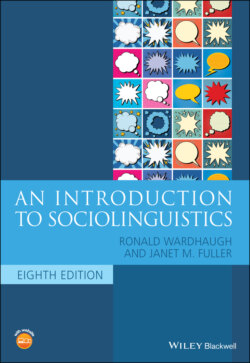Читать книгу An Introduction to Sociolinguistics - Ronald Wardhaugh, Janet M. Fuller - Страница 45
The standardization process
ОглавлениеIn order for a standard form to develop, an idealized norm must be accepted; this is a norm that users of the language are asked to aspire to rather than one that actually accords with their observed behavior. However, it is perceived as a clearly defined variety.
Selection of the norm may prove difficult because choosing one vernacular as a norm means favoring those who speak that variety. As noted by Heller (2010), language can be viewed not as simply a reflection of social order but as something which helps establish social hierarchies. Thus it is not just that a variety is chosen as the model for the standard because it is associated with a prestigious social identity, but that it also enhances the powerful position of those who speak it, while diminishing all other varieties, their users, and any possible competing norms.
The standardization process itself performs a variety of functions. It unifies individuals and groups within a larger community while at the same time separating the community that results from other communities. Therefore, it can be employed to reflect and symbolize some kind of identity: regional, social, ethnic, or religious. A standardized variety can also be used to disenfranchise users of other varieties, usually those who are of lower socioeconomic status or ethnic/racial minorities (Rosa 2016). It can therefore serve as a kind of goal for those who have somewhat different norms; for example, Standard English and Standard French are such goals for many users of nonstandardized dialects of these languages. However, as we will see, these goals are not always pursued and may even be resisted.
